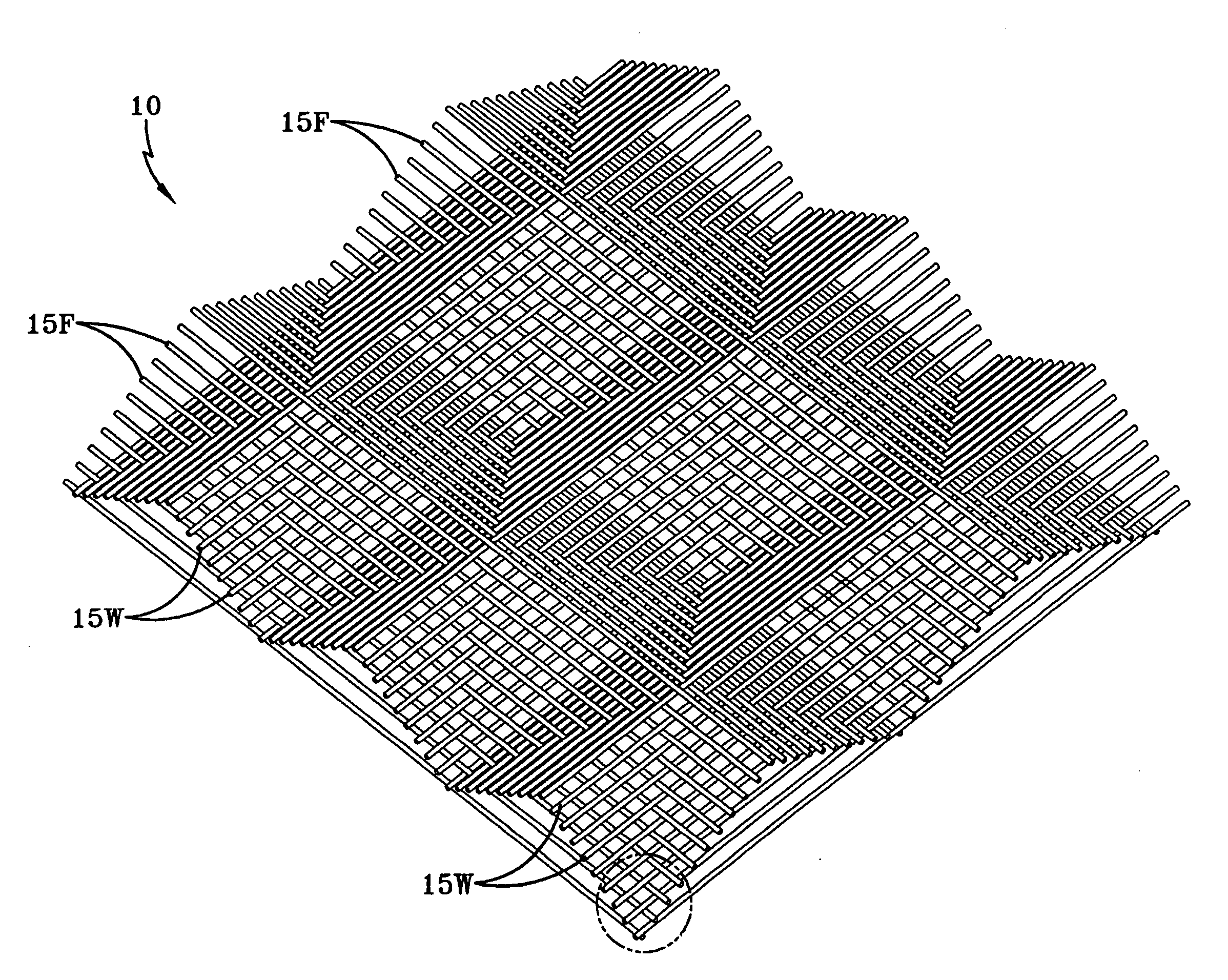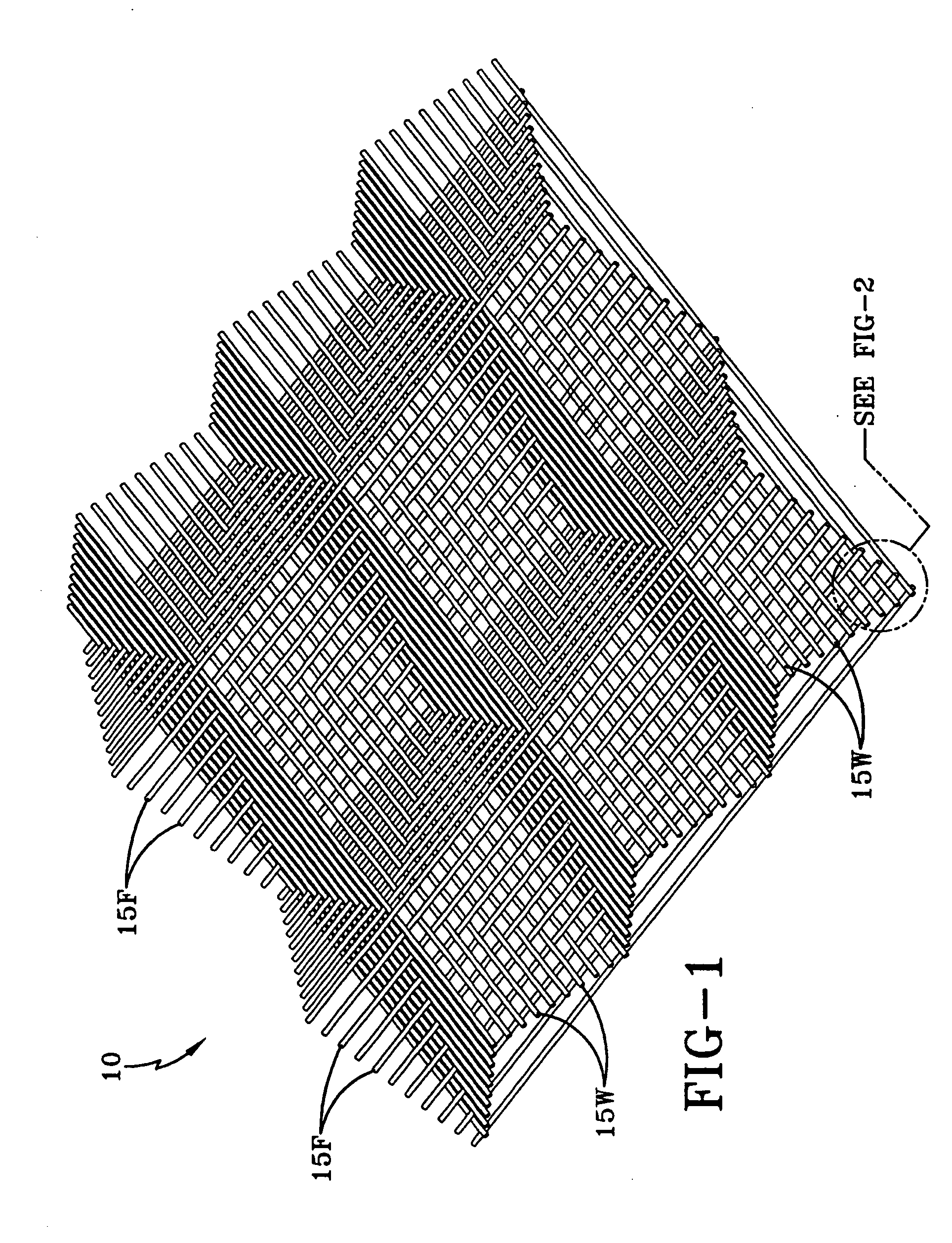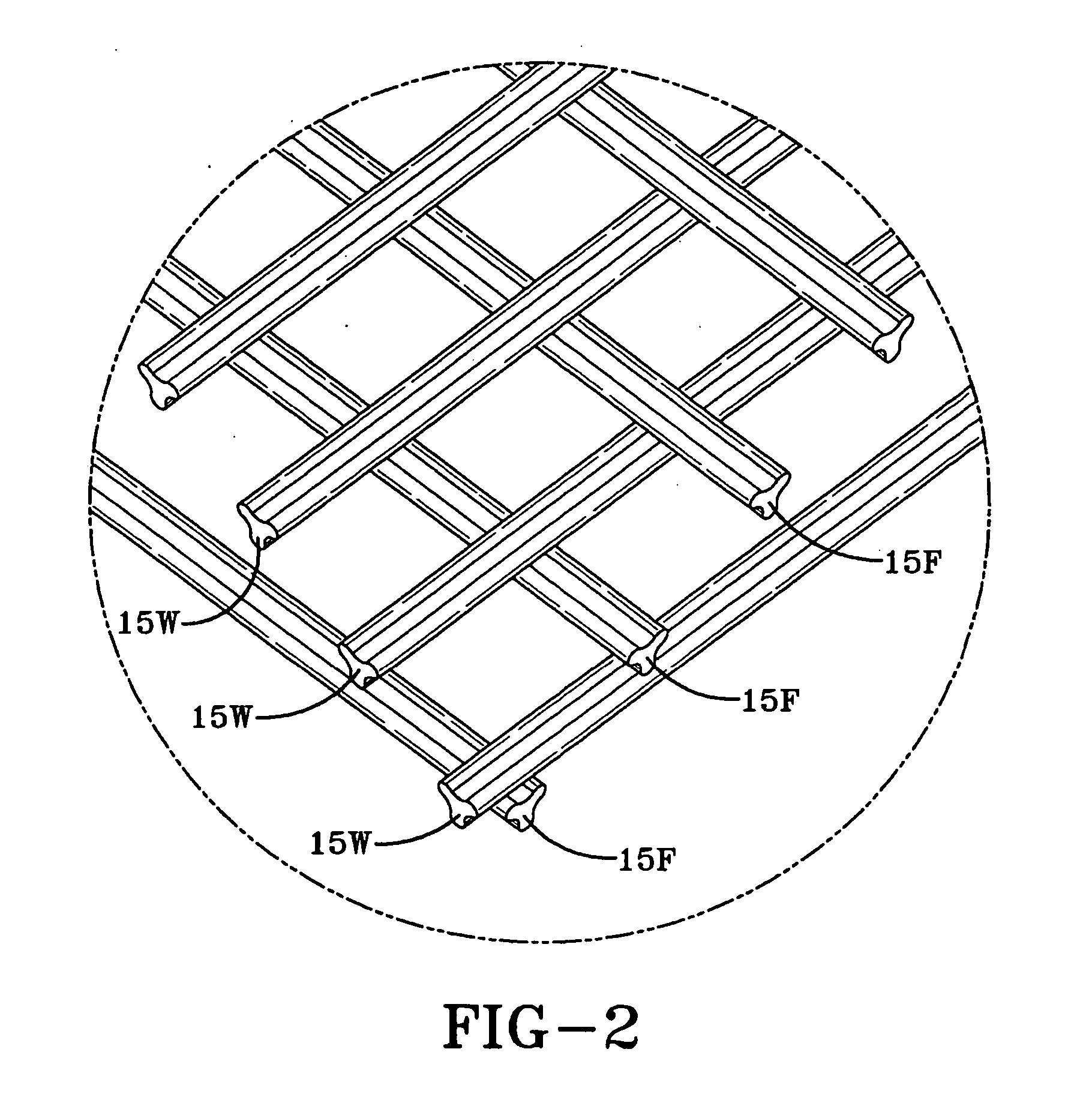Pyramidal fabrics having multi-lobe filament yarns and method for erosion control
a technology of filament yarn and multi-lobe, applied in the field of three-dimensional, high-profile, woven geotextile structures, can solve the problems of yarn not imparting strength to straight yarns, failure points to exist with respect to bonding, and most of these structures have been generally ineffective in providing true stability and reinforcement for soil, etc., to achieve the effect of protecting from further erosion
- Summary
- Abstract
- Description
- Claims
- Application Information
AI Technical Summary
Benefits of technology
Problems solved by technology
Method used
Image
Examples
Embodiment Construction
[0030] The present invention is directed toward geotextile fabrics, as set forth in U.S. Pat. Nos. 5,567,087 and 5,616,399, noted hereinabove. The difference between the fabrics described in the patents and the present invention is that while the former employed round, monofilaments to weave the fabric, the fabrics of the present invention are woven from multi-lobe filament yarns and are referred to herein as pyramidal fabrics. Such fabrics are used to prevent erosion of exposed surfaces and to facilitate the revegetation of a previously eroded surface.
[0031] A geotextile fabric embodying the concepts of the present invention is generally indicated by the numeral 10 in the accompanying drawings and includes two sets of filaments 15W (warp direction) and 15F (fill direction) interwoven in substantially perpendicular directions to each other. As best shown in FIG. 2, the fibers or filament yarns are initially, preferably woven into a type of pattern known in the weaving art as a “waf...
PUM
| Property | Measurement | Unit |
|---|---|---|
| Fraction | aaaaa | aaaaa |
| Fraction | aaaaa | aaaaa |
| Fraction | aaaaa | aaaaa |
Abstract
Description
Claims
Application Information
 Login to View More
Login to View More - R&D
- Intellectual Property
- Life Sciences
- Materials
- Tech Scout
- Unparalleled Data Quality
- Higher Quality Content
- 60% Fewer Hallucinations
Browse by: Latest US Patents, China's latest patents, Technical Efficacy Thesaurus, Application Domain, Technology Topic, Popular Technical Reports.
© 2025 PatSnap. All rights reserved.Legal|Privacy policy|Modern Slavery Act Transparency Statement|Sitemap|About US| Contact US: help@patsnap.com



